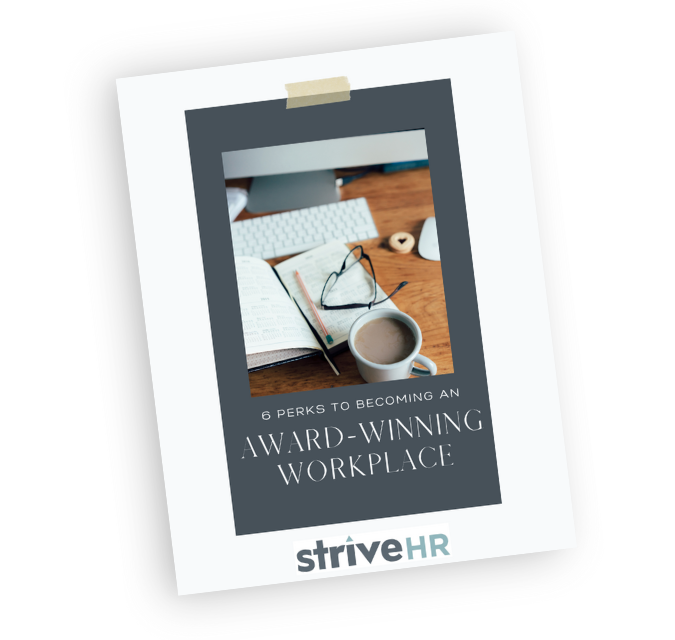Employee engagement surveys are a powerful way to gauge how your employees feel about working for your organization.
You can gain insights into key factors that help you make decisions on areas impacting your business and people operations, and learn where to address your time, focus and dollars.
You can get a baseline for where you currently stand with your corporate culture so that they can identify areas to focus on for improvement. After all, it’s difficult to determine what to work on and measure improvement if you don’t know where you started.
You can address a pain point your organization is currently facing, such as:
- Improve ability to attract and keep top talent
- Measure the alignment between employees and their work
- Identify why the workplace may have become toxic
- Increase market awareness or establish credibility
Whatever your reasons may be, it’s important to keep these in mind during the duration of the engagement survey process. This is what is referred to as your WHY. Staying aligned with your WHY will help you to remain focused during your employee engagement journey.
Conducting the survey doesn’t stop at the survey.
In fact, you are just getting started!
When notifying your employees that you are conducting an employee engagement survey, be sure to share your WHY with them. Also, make a commitment to your employees that you will share the survey results with them and to do the work towards improvements.
After your survey closes, you will receive a lot of information, possibly more-than-you-know-what-to-do-with kind of information. If this is your first time conducting an employee engagement survey, you may feel overwhelmed.
It’s natural to feel that way considering ALL the reports and data you will receive and let’s not forget the oh so important open-ended comments. This sometimes sends even the experienced HR professional or business leader into a panic.
Do not let overwhelm deter you from your focus. These reports and open-ended comments are your golden ticket to the valuable feedback from your employees. They took the time to share with you their opinions and thoughts, and now it’s time for you to keep your commitment to share the findings.
Having a plan of action with your survey results is key! As the leader of this initiative, your team is counting on you for direction.
6 steps to take after you receive your employee engagement survey results:
#1 Analyzing Data and Reports
Understanding the survey results and knowing how to interpret the findings are critical to the next steps of your engagement survey process. The reports you receive will range from high-level reports including overall engagement and satisfaction rates, to specific insights and open-ended comments.
The insights and data can be assessed by department, tenure, and job level to name a few. You can look further into this data to identify a specific segment, such as how employees rate compensation for a particular tenure within a department. This can all be done without compromising confidentiality of the employees.
Another area you can evaluate is the benchmark criteria, where you can compare your organization against other organizations based on industry, size, and location. Bonus: If you have conducted prior engagement surveys, you will also have the ability to benchmark against your prior data which enables you to see areas which you have improved or receded in scores.
#2 Executive Summary
The executive and leadership teams will be the first to hear the findings, before you present them to your employees. It is likely that they will not want the details, as they are counting on you leading the initiative to execute the full review of the data.
It is ideal to obtain leadership buy-in early on in this process. Now, it’s time to report back to them what you have learned. They are expecting to hear:
- Highlights of the survey, both the positive and the negative.
- Specific areas of concern that will require more action and attention
- Your recommendations for improvement
- Be sure to also include highlights of ‘wins’ especially if this is an area which you may not have scored well in a previous survey
An important area to discuss with the leadership team is your organization’s rollout plan. This is where you will be addressing strategies to share the data with your employees including who will deliver the information, when and where, and how the data will be presented.
#3 Goals And Strategies of Survey Findings
You may be anxious to share the results of the survey with your employees, but before you do, it’s important to identify what you plan to do with this new information. As you will be presenting the high level findings with your employees, you will also be sharing what goals and strategies you have determined need to be addressed.
The executive summary meetings are a great time to discuss goals and strategies based on the engagement survey findings. Also, keep in mind the corporate goals for your organization and connect the survey content when possible. Do this well and you will continue to have their buy-in and support.
Consider including employees in action items of the goals through the use of teams or focus groups. As you are determining your goals, decide if your organization would like to invite employees to participate. This is a great way to empower your employees to be involved in continuous improvement!
#4 Share Results and Plans with Employees
The first thing to share with your employees is a THANK YOU! Thank them for responding to the survey. Without your employees’ involvement in this initiative, you would be missing out on valuable feedback.
Most employees have no problem sharing their feedback with you. However, the method to which they feel comfortable providing their feedback does differ between employees. That’s what makes an employee engagement survey such a great resource, as it allows for confidentiality.
Conducting an employee engagement survey creates a safe place where your employees can voice these opinions and trust that you are going to listen to them. Many of the survey administrators have gone to great lengths to ensure confidentiality for your employees to share their feedback. Now it’s up to you to report back to them.
Sharing the findings of your employee engagement survey is often done at the company-wide level. You can include in the presentation:
- Thank employees for participating
- Areas which the organization scored well
- Items to be worked on
- Goals set based on the survey findings
- Include if employees will be involved in focus groups/teams to address ideas
- Address employee questions
- Next steps
#5 Measure Progress
After determining the areas you will be working on, the goals you have set and the strategies which you will focus on as an organization, it’s time to determine how you will measure your progress. One way to do this is to keep consistent with how you are measuring progress in other areas of your organization.
The key here is to be consistent. As you see progress being made, you will be more determined to continue focusing on the areas which you committed to work on.
Employee engagement survey reports will include many areas that could be improved upon. You may be tempted to work on every area, but that is not realistic. Identify 3-5 areas for improvement and focus on those for the duration until your next engagement survey. Taking on too much will leave you frustrated and disappointed that you couldn’t tackle it all.
#6 Report Back On Progress
You have come full circle by conducting the survey, identifying what you did well and what you need to work on, sharing results, addressing areas of improvement and measuring your success. Whew, that’s a lot of work! Now it’s time to report on how you did.
First, bring the leadership team back together to present the results of the progress. They may have questions to address before sharing the updates with the employees. Were you able to support your organizations’ corporate direction when you set goals based on the survey results? Here you can identify what you found and how it will help your company to achieve those goals.
Next, share an update with your employees on the progress made towards the goals. If your organization has recurring employee meetings, you can add this as an agenda item so they are consistently updated.
The more you discuss your WHY, your goals and your progress, the more this gets closer to being a part of your workplace culture.
Connecting Engagement to Workplace Culture Awards
You may have conducted an employee engagement survey in conjunction with applying for a workplace award. Most award processes place a heavy weight on the employee survey portion of the application. Some administrators base 80% of your award score on the employee engagement survey.
If you are going to invest your time and dollars on applying for a workplace award, doesn’t it make sense that you will equally want to invest into reviewing the survey results? Yet surprisingly, I’ve talked with organizations who have shared comments with me such as:
“We won! We don’t need to read through the results.”
Sadly, these organizations are missing out on a gold mine of data. If they choose to not review the results of their engagement survey, chances are they may be missing out on important items that need to be addressed. This could impact their opportunity to remain on the list of organizations who have won this distinction.
“There are so many reports. I don’t have time to read them now. I’ll get to it later.”
Guess what, they may not get around to reading those reports ‘later’. Before they know it, weeks, possibly months go by and they don’t get back to reviewing the reports. If you are not dedicating time to review these reports, your employees’ trust in this initiative will decline. They will not feel heard and respected and will likely not participate in upcoming surveys.
Skipping out on the steps to act on the survey findings means you are missing out on a gold mine of data from your employees. And by not sharing the results with your employees, you are risking losing their trust and confidence that you care about and respect their feedback.
Take time to sincerely thank your employees for participating in your employee engagement survey. Their feedback makes your continuous improvement initiative possible, and whether they say it or not, they likely appreciate the opportunity to share their thoughts with you.
If your organization is looking for an advisor to help with your employee engagement survey, is looking to become an award-winning workplace or simply wants to improve your workplace culture, let’s talk about how I can help you. Schedule a time to chat here.




